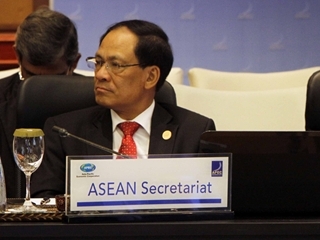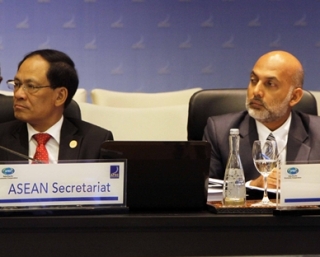 The Asia-Pacific Economic Cooperation (APEC) continues to be the driving force for global growth even as it needs to increase its efforts to manage the “continued unevenness in growth between economies” to sustain its recovery.
The Asia-Pacific Economic Cooperation (APEC) continues to be the driving force for global growth even as it needs to increase its efforts to manage the “continued unevenness in growth between economies” to sustain its recovery.
Indonesia’s President Susilo Bambang Yudhoyono made the statement at the opening of the 2013 APEC Economic Leaders’ Meeting in Bali, Indonesia, on October 7.
“We convene the APEC Leaders’ meeting at a very critical juncture,” said President Yudhoyono, who pointed to signs of an improvement in growth in many developed economies while emerging markets struggle to address an economic slowdown.
“Such a situation should be carefully managed, otherwise it could weaken the momentum for recovery,” President Yudhoyono said. This is especially the case for emerging economies, including Indonesia, he added.
APEC’s 21 member-economies account for 54 percent of global gross domestic product. “According to the IMF, as a group, APEC is expected to grow by 6.3 percent in 2013 and by 6.6 percent in 2014,” the President said.
He noted. “We should redouble our efforts to sustain our resilience and maintain our role as the pillar and the safety belt of global growth.”
APEC economies are working to achieve the Bogor Goals for free and open trade and investment in the region by 2020. These include the further lowering of tariffs in the region, which have declined by nearly 70 percent since 1989, and greater collaboration to lower the cost of doing business across borders.
“We also need to ensure an open, rules-based, transparent and non-discriminatory multilateral trading system,” President Yudhoyono continued. “This multilateral trading could serve as an essential source of sustainable economic growth, development and stability.”
“We have even greater opportunities for achieving more productive and larger trade and investment,” he concluded. “To seize these opportunities, our region needs to be more interconnected and interlinked.”





